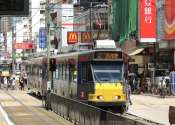Automated driving in convoy: A flexibility boost for bus transport
Experts believe that automated driving makes particular sense in public transport—both ecologically and economically. The shortage of drivers, which has been lamented frequently, further reinforces this trend.
Apr 24, 2023
0
18









